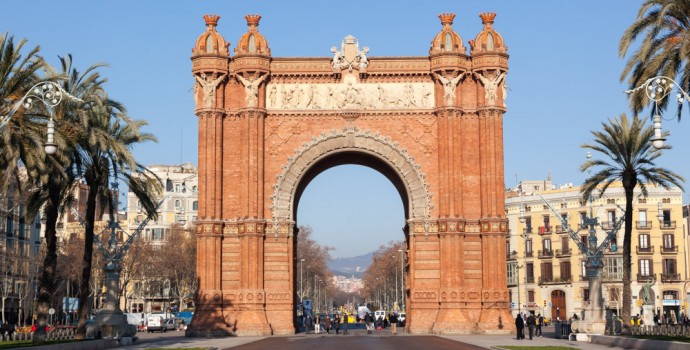There are various famous arches in the world’s architecture, including Paris’s renowned Arc de Triomphe. But Barcelona’s Arc del Triomf, built in 1888 and over 80 years after the Parisian monument, is quite different from its predecessors from its size alone (with a height of approx. 30 metres, it is half the size of the one in Paris for example). It also is a civil monument rather than a military one.
The Moorish-inspired style ‘Neo-Mudejar’ is what gives the arch its particularity: the unmissable red bricks, standing out in the blue Barcelona skies, were the design of architect Josep Vilaseca.
It was built at the top of Paseo de Lluís Companys as an entrance to the 1888 Barcelona Universal Exposition (Spain’s First International World Fair) which was taking place in Ciutadella Park, and was refurbished just after its 100th anniversary, in 1989.
Vilaseca contracted various Catalan artists in order to decorate the arch’s sides, such as J. Reynés, J. Llimona, A. Vilanova, T. Tasso, M. Fuxà and P. Carbonell. Included in these sculptures are the Spanish monarchy’s arms right at the top above the arch, flanked by a lion on either side. There is also a mixture of sculptures representing symbols of agriculture, science and arts, industry and commerce. Vilaseca’s main message with these sculptures and designs was for Barcelona to welcome all nations to the Fair.
You can spend a little while walking around the arch, checking out the numerous details in the sculptures and motifs. After having looked at the arch, take a walk through the arch and down the palmtree-lined avenie, all the way down to the park in order to enjoy the arch’s magnificence from afar. Cyclists, skaters, giant bubble-makers and street artists will make your walk all the more enjoyable. Don’t miss the green parrots that love flying from palm tree to palm tree, and the beautifully-designed street lights.
Arrive:
Metro  , Arc de Triomf
, Arc de Triomf
